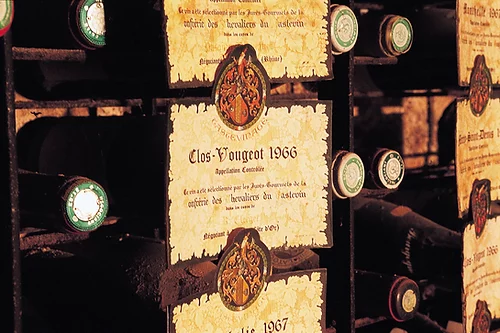On our private wine discovery tour everything is customizable so you may wish to include one or 2 of the following famous historical sites.
Clos Vougeot
Historically, monks and monasteries of the Roman Catholic Church have had an important influence on the history of Burgundy wine. The first known donation of a vineyard to the church was by king Guntram in 587, but the influence of the church became important in Charlemagne's era.
The Benedictines, through their Abbey of Cluny founded in 910, became the first truly big Burgundy vineyard owner over the following centuries. Another order which exerted influence was the Cistercians, founded in 1098 and named after Citeaux, their first monastery, situated in Burgundy.
The Cistercians created Burgundy's largest wall-surrounded vineyard, the Clos de Vougeot, in 1336. More importantly, the Cistercians, extensive vineyard owners as they were, were the first to notice that different vineyard plots gave consistently different wines. They therefore laid the earliest foundation for the naming of Burgundy crus and the region's terroir thinking. The Renaissance Château du Clos de Vougeot, situated inside the wall, was added in 1551 by rebuilding and enlarging a small chapel and some other buildings previously existing at the site.The Cistercians created Burgundy's largest wall-surrounded vineyard, the Clos de Vougeot, in 1336. More importantly, the Cistercians, extensive vineyard owners as they were, were the first to notice that different vineyard plots gave consistently different wines. They therefore laid the earliest foundation for the naming of Burgundy crus and the region's terroir thinking. The Renaissance Château du Clos de Vougeot, situated inside the wall, was added in 1551 by rebuilding and enlarging a small chapel and some other buildings previously existing at the site.
In the French Revolution, all vineyard possessions were taken from the church by the French state, and sold off to private buyers. In 1818, the château and vineyards of Clos de Vougeot was bought by Julien-Jules Ouvrard, who also bought the Romanée-Conti vineyard in 1819. Ouvrard later moved to Château de Gilly which is now a hotel and restaurant we can stop for lunch.
The monks from Cîteaux identified Burgundy's Climats nine centuries before they were officially recognized in 2015 as a UNESCO World Heritage Site. The Château has 12,000 active members of the Confrérie and over 80 owners. Visits are possible.

